Luftwaffe Paratrooper Badge, by Jmme
CATEGORY: Version
SKU: 01.GTR.0707.101.09.000
Estimated market value:
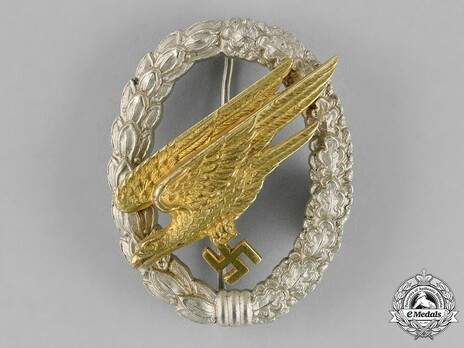
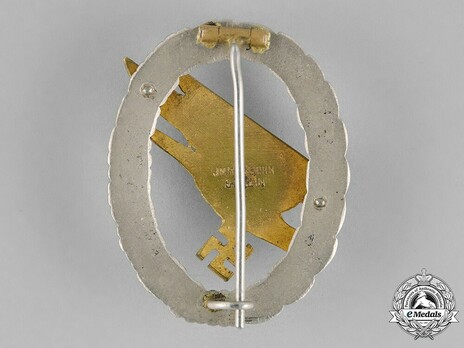
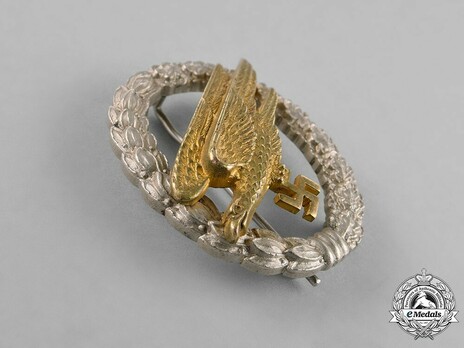
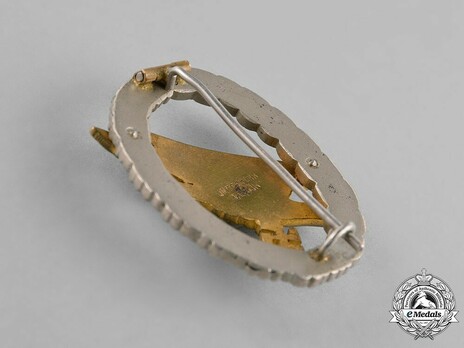
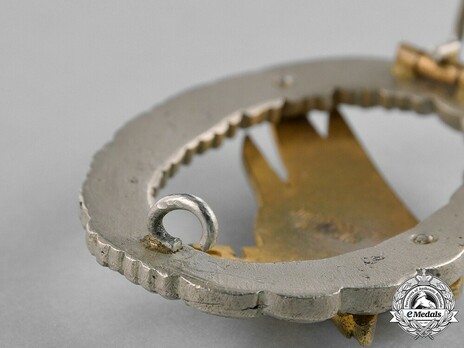
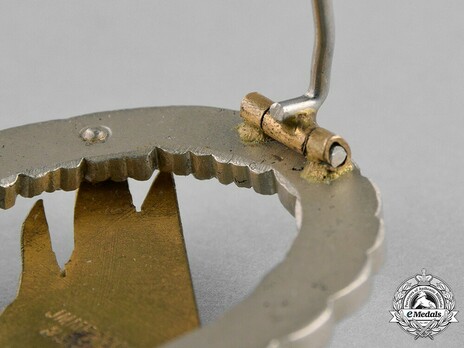
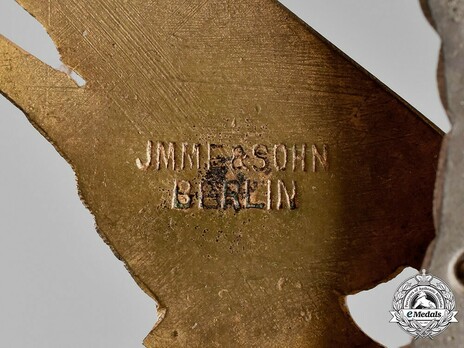
Estimated market value:
(Luftwaffe Fallschirmschützenabzeichen). Consisting of an oval nickel silver wreath, with laurel leaves on the left half of the wreath, and oak leaves on the right half of the wreath; with a gilt bronze eagle attached to the obverse via two rivets visible on the reverse, clutching a mobile swastika in its talons; the reverse plain, with a vertical needle pin, a barrel hinge, and a round wire catch; marked with the logo of “JMME & SOHN, BERLIN” on the reverse; measuring 41.82 mm (w) x 52.44 mm (h); weighing 37.2 grams; in overall mint condition.
The Luftwaffe Paratrooper Badge was instituted by Hermann Göring on November 5, 1936. It is a qualification badge that was awarded for those that successfully passed the tests to become a paratrooper. In order to do that, a soldier had to have six confirmed parachute jumps to his name.
Later regulations state that officially every owner of a Paratrooper Badge had to repeat this feat inside every 12 months period, otherwise they were to return their badge. However, there is no evidence that this was actually enforced. In fact, in the later years of the war the Luftwaffe Paratrooper Badge could be awarded to any soldier that was part of a paratrooper unit, even those that did not receive parachutist training, but were merely assigned to the unit as a medic or driver.
The initial regulations stated that the wreath of the badge was to be made of oxidized Neusilber. Neusilber, also known as nickel silver, is an alloy of brass and nickel, and does not in fact contain actual silver. Oxidizing nickel silver darkens it and gives it an antique look. The eagle was to be made of gilded brass.
In September of 1937, this was changed. Now, the entire badge was to be made of aluminum, with the wreath still in an antique silver look and the eagle still gilded. Some companies also experimented with cupal, which is not an alloy, but a composite material of an aluminum base with a thin copper plating.
With material shortages worsening as the war went on, by 1942 most badges were now made from a lower quality and abundant material, zinc.
Since most companies produced a plethora of different variants and variations, not necessarily all of them can and will be displayed here.
The company Imme & Sohn from Berlin used a capital J instead of an I for their maker marks, as was often done in Germany at the time. No badges made from zinc have been found by this maker, which likely means that the company only produced these badges prior to 1941/42. Instead, the badges are all made with a brass eagle and a nickel silver wreath. One of the tell-tale signs of Imme badges is the fact that, contrary to regulations, the company left their wreaths silver instead of blackening them.
Imme had a close relationship with another Berlin-based company, Juncker. Imme badges can be found utilising Juncker eagles and/or wreaths. Unlike the Imme wreaths, the ones by Juncker are sometimes blackened.
There are two distinct eagle designs, both of which can be further subcategorised into two variants due to specific die flaws.

Comments
Sign in to comment and reply.


Scroll Top